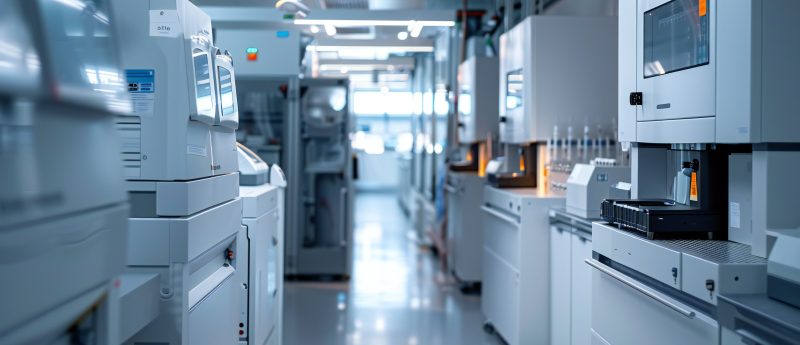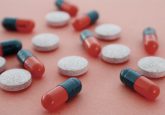5. Challenges and solutions for biologics quantitation by LC–MS

In this section of our Ask the Experts feature, discover the challenges experts face when it comes to biologic quantitation by LC–MS and what solutions can be used to address them.
What are the challenges of LC–MS strategies for biologic quantitation? How do you avoid these and what solutions have you used to overcome them?
Chad Christianson (Alturas Analytics)
Challenges:
Sensitivity, selectivity, internal standard selection and sample preparation time.Solutions:
Selectivity/sensitivity: digestion of large molecules in biological matrices results in the formation of thousands of peptides at varying concentrations. Many of these peptides will interfere with your target peptide. Selection of a target peptide with at least 8 amino acids is beneficial but further cleanup of the sample using immunocapture may be required in order to meet the desired lower limit of quantitation interference free. Many different platforms for immunocapture exist to remove the interferences present in the samples while preserving the large molecule. Magnetic bead capture is the most widely used but other tip-based methods such as mass spectrometric immunoassay are now on the market for commercial use. These alternative methods permit the use of robotics to perform the immunocapture allowing a virtual hands-free sample preparation for most of the labor-intensive steps required with magnetic bead preparation (e.g. bead wash steps). Other sensitivity gains can be made at the instrument level by using microflow LC. Ionization efficiency increases as the flow rate going into the source is decreased. A several fold increase in signal may be obtained by reducing the flow rate from 0.7 mL/min to 10.0 µL/min.Internal standard selection: if possible, a labeled large molecule is the best solution. This internal standard will be subjected to the same intense preparation procedure (denature, reduce, alkylate and digest) that happens to the biologic, so this is the best solution to compensate for any volume or procedural discrepancies. Due to the material cost and labor involved in synthesizing stable label large molecules to be used as internal standards, stable label peptides that match your target sequence can be purchased at a much lower cost. These stable label peptides co-elute with the target peptides so they will compensate for potential suppression and enhancement that may be present during the analysis. These internal standards will not compensate for any inefficiency that may have occurred during the denaturing, reduction, alkylation and digestion steps. It is also possible to obtain a stable label peptide sequence flanked by several amino acids. The cost of synthesis is much cheaper than purchasing the entire stable label protein and would be digested alongside the target protein compensating for any digestion inefficiencies.
Sample preparation: optimization of each preparation step is key to minimize the sample processing time. Using RapiGest™ (Waters, MA, USA) decreases the denaturing time when compared to urea and doesn’t require further dilution prior to the digestion step which may increase the sensitivity. The biggest time savings can be recognized at the digestion step. Overnight digestion is not always necessary so a time course experiment should be performed to find the optimum digestion time. New trypsin 96 well plate technology is also becoming available. These membrane-immobilized trypsin flow through plates theoretically reduces the digestion time from hours to minutes.
Matthew Ewles (Covance)
Typically, selectivity and sensitivity. For example, a signature peptide approach without pre-digestion enrichment will yield hundreds of peptides which lack mass resolution from the target peptide by triple-quadrupole instruments. The solutions to this have been partially technological (better column chemistries, alternative MS/MS selectivity tools such as ion mobility) and partly by introducing pre-digestion enrichment (e.g., using protein A/G capture or immunoaffinity extraction), or using high resolution mass spectrometry.
The commercial availability of excellent consumables and automation platforms for immunoaffinity workflows have provided many of the solutions over the last decade. It is now possible to extract multiple plates using immunoaffinity extraction and tryptic digestion in just a few hours using affordable and robust commercial materials. Such a workflow 10 years ago could have taken days and would have been significantly less robust, more expensive and less user-friendly. Perhaps one of the biggest drawbacks today to LC–MS being more widely used for biologics is simply historic precedent and familiarity with ligand binding assays, aswell as a lack of understanding that LC–MS provides a potential solution.
Wenying Jian (Janssen Research & Development)
The biggest challenge we are often facing in biologic quantification is to achieve sensitivity to reliably quantify analytes of low abundance. Intrinsically LC–MS detection is not as sensitive as LBA because there is no signal amplification step and ionization efficiency in mass spectrometry is typically low for large molecules, even after being digested into peptides, not to mention intact protein analysis. The most commonly used approach to improve sensitivity is immuno-affinity capture to purify the analyte of interest from the biological matrix, a process commonly known as hybrid LBA LC–MS because it involves the same initial capture step as LBA. In addition to purification of the protein at protein level, a second pulling down step after trypsin digestion using an antibody against the tryptic peptides has also been shown to boost the sensitivity significantly. For intact protein analysis, sensitivity can be improved by breaking the protein down to smaller subunits, an approach known as middle down analysis. For example, a monoclonal antibody can be reduced into light chain and heavy chain,which can be done in combination with mAb specific enzyme such as IdeS to break the heavy chain in half at the hinge region. The resulting subunits are much smaller than intact mAb and give better signal and mass resolution in MS detection. Micro-flow LC by reducing the mobile phase flow rate can increase ionization efficiency and therefore boost detection sensitivity, which has been demonstrated for biologics at peptide-level detection and yet to be fully tested for intact protein analysis.
Another challenge of LC–MS for biologic quantification is the complicated assay procedure, such as immuno-affinity capture, reduction, alkylation and digestions steps that result in low throughput and added variability. Progress has been made in the automated liquid handling platforms such as Kingfisher, AssayMAP, MISA tips that enable speedy and hands-free sample processing in 96-well plate format. In addition, advanced digestion products such as Rapid Trypsin and mass spec-friendly surfactant can also improve assay throughput and reproducibility.
Carsten Krantz (Novartis)
While LC–MS/MS is the technology of choice for the quantitation of small molecules, its application to large molecules was a long time restricted to niche applications and not used routinely for the quantitation of biologics in the pre-clinical and clinical space. These problems came especially through long method workups and long gradients needed to achieve sensitivity. Therefore, ligand binding assays such as enzyme-linked immunosorbent assays (ELISA) are still the preferred technology due to their sensitivity, ease of preparation and also possibilities for automation.
In recent years with the introduction of streamlined workflows dedicated tools like thermostable proteases that allow short digestion times at elevated temperatures, peptide specific columns and dedicated software applications, biologics by LC–MS/MS gains more and more interest. Using standard triple quadrupole mass spectrometers and generic assays for antibody -like modalities, assays in pre-clinical studies can be easily set up using Ig isotype specific peptides and transferred seamlessly to other candidates. Also, the set-up of methodologies for novel modalities where no antibody tools exist can be achieved rapidly. When doses become lower or in clinical settings where often low drug concentrations need to be quantified, biologics LC–MS/MS is often constrained by its limited sensitivity. However, with the introduction of so-called hybrid LBA LC–MS/MS assays, sensitivities can be enhanced significantly and quantitation limits in the pg/mL can be achieved [1]. Hybrid assays often use the same capture antibody or ligand as a ligand binding assay to purify the drug which results in a gain of sensitivity.
Additionally, now not only total assays (sum of bound and free drug) but also free drug assays can be used. Thus, quantitation of active drug is not merely restricted to ligand binding assays but can also be measured using mass spectrometry as a detector [2]. Combined with the enhanced selectivity of mass spectrometry now multiple peptides can be quantified and biotransformation questions can also be addressed [3].
References[1] Chen L, Roos D, Philip E and Pagels S. Sequential immunoaffinity–LC/MS assay for quantitation of a therapeutic protein in monkey plasma. J. Appl. Bioanal. 3(5), 127–138 (2017).
[2] Jordan G, Onami I, Heinrich J and Staack RF. Evaluation of the potential use of hybrid LC–MS/MS for active drug quantification applying the ‘free analyte QC concept.’ Bioanalysis.9(21), 1705-1717 (2017).
[3] Kaur S, Bateman KP, Glick J et al. IQ consortium perspective: complementary LBA and LC–MS in protein therapeutics bioanalysis and biotransformation assessment. Bioanalysis. 12(4), 257-270 (2020).
Keeley Murphy (Thermo Fisher Scientific)
Depending on the analytical approach the challenges will vary. For signature peptide quantification where the biologic target is digested and the subsequent peptides unique to the intended target are monitored, challenges are mainly focused around the method development related to unique peptide identification and overall signal response and sensitivity. These concerns are often addressed by utilizing software tools to facilitate peptide mapping and signature peptide identification, in conjunction with implementing a standardized digestion protocol that can be easily reproduced from analysis to analysis across multiple operators. Taking sample preparation a step further with automation of the sample digestion protocol is another practical measure to realize greater levels of reproducibility with the added benefit of cross-lab standardization as projects progress through the development cycle.
For biologic quantification at the intact or sub-unit level, sensitivity can often be limited due to the ionization efficiency of the larger protein. For this reason, quantification at the intact or sub-unit level are often coupled with hybrid immunoaffinity LC–MS assays where an immunocapture purification procedure is performed to remove unwanted background matrix and concentrate the target analyte. When properly optimized, this hybrid approach is capable of producing limit of quantification levels well within the required limits of most development projects. Another tool to consider for biologic analysis at the subunit or intact level is differential ion mobility. Filtering of background or interference ions at the mass spectrometer source through the use of differential ion mobility provides an orthogonal separation of the target biologic in the gas phase that is complimentary to chromatographic separation. The benefits of differential ion mobility for separating protein target ions from complex mixtures have been previously demonstrated and provide a unique opportunity to resolve some of the separation challenges faced in biologic quantification [1,2].
References[1] Cooper HJ. To what extent is FAIMS beneficial in the analysis of proteins? J Am. Soc. Mass Spectr. 27, 566–577 (2016).
[2] Melani RD, Srzentić K, Gerbasi VR et al. Direct measurement of light and heavy antibody chains using ion mobility and middle-down mass spectrometry. mAbs 11(8), 1351–1357 (2019).
The opinions expressed in this feature are those of the authors and do not necessarily reflect the views of Bioanalysis Zone or Future Science Group.







